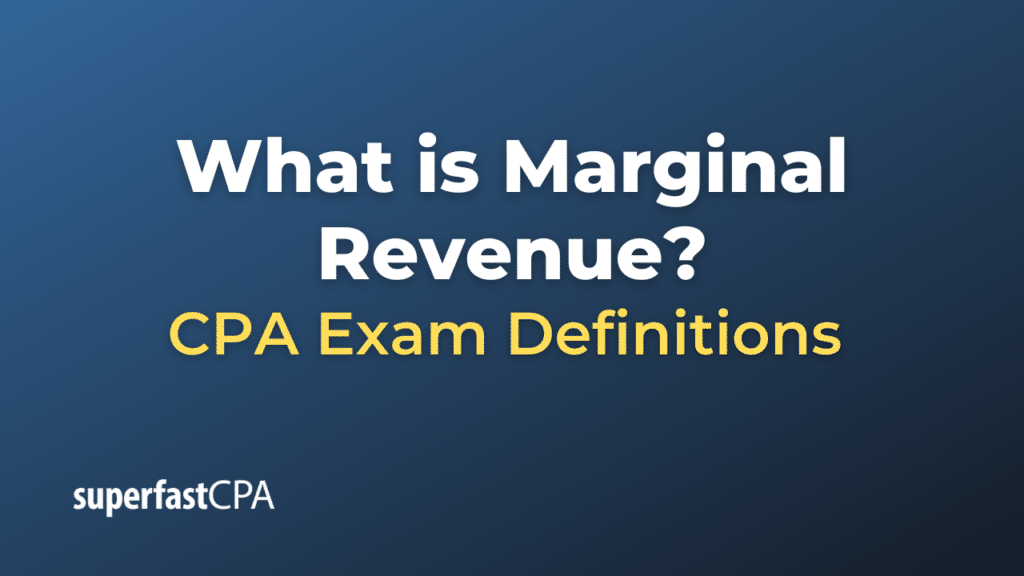Marginal Revenue
Marginal revenue (MR) is an economic concept that represents the additional revenue that a firm earns from selling one more unit of a product. It’s the increase in total revenue that results from selling one extra unit of that good or service.
To calculate marginal revenue, you divide the change in total revenue by the change in the quantity of the product sold. This can be represented by the following formula:
Marginal Revenue = Change in Total Revenue / Change in Quantity Sold
Marginal revenue is a critical concept in economics and business, as it’s used to determine the optimal quantity of a good or service a company should sell to maximize its profits. When a company’s marginal cost (the cost to produce one additional unit) equals its marginal revenue, it maximizes its profit. If marginal cost is greater than marginal revenue, a firm may reduce production to avoid losses, and if marginal revenue is greater than marginal cost, a firm may increase production to maximize profit.
It’s important to note that in perfectly competitive markets, the marginal revenue is equal to the price of the product. In contrast, for firms with market power (like monopolies or oligopolies), the marginal revenue is typically less than the price due to the downward-sloping demand curve—selling additional units requires lowering the price, which affects revenue from all units sold.
Example of Marginal Revenue
Imagine a company, “TechGadgets”, that manufactures and sells electronic gadgets. Let’s say currently TechGadgets is selling 100 gadgets at a price of $50 each, bringing total revenue to $5,000.
Now, TechGadgets decides to increase sales by one unit, so it lowers the price slightly to attract more customers. The company manages to sell 101 gadgets, but at a slightly lower price of $49 each. This gives a new total revenue of $4,949.
To calculate the marginal revenue of selling the 101st gadget, we would calculate the change in total revenue and divide it by the change in quantity sold, like this:
Marginal Revenue = Change in Total Revenue / Change in Quantity
Marginal Revenue = ($4,949 – $5,000) / (101 – 100)
Marginal Revenue = -$51 / 1
Marginal Revenue = -$51
In this example, the marginal revenue from selling the 101st gadget is -$51. This means TechGadgets actually loses $51 in total revenue by selling that extra gadget because the lower price applied to all gadgets sold, not just the additional one. TechGadgets would need to reconsider its pricing strategy in this case.
This example demonstrates marginal revenue in the context of a company with market power, where increasing quantity sold requires lowering the price, which affects revenue from all units sold. This leads to marginal revenue that can be less than the price, or even negative as in this example. In a perfectly competitive market, the marginal revenue would simply be the price of the product, and a firm would not have to lower its price to sell more units.














